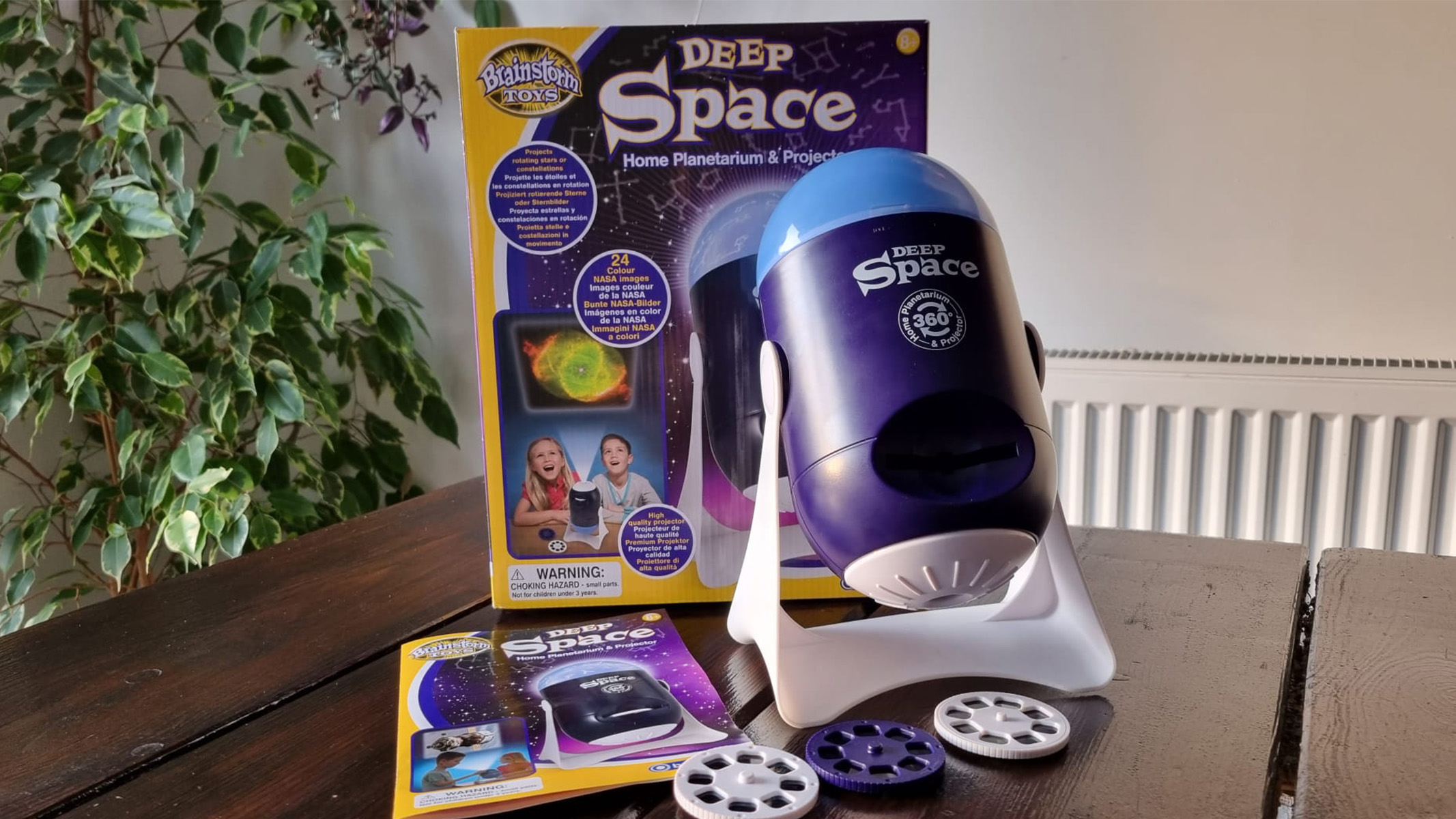
Brainstorm Toys (Brainstorm Ltd) has developed a range of educational and interactive STEM toys, including a projector and nightlight selection. Here we're looking at the Deep Space Home Planetarium and Projector.
Size: 130mm x 250mm x 320mm
Bulb Type: 2 x LED
Laser: None
Control: On body
Rotation: Yes
Sleep timer: No
Speaker: No
Projection Surface: Projector 1m, stars not specified
It is designed to enable young budding astronomers to explore the wonders of space from their bedrooms, exploring NASA and Hubble Telescope images of spacecraft, planets and nebulas and transforming their rooms into the night sky thanks to the star projector function.
They can sleep under the stars or spot well-known constellations as they glide across their ceiling. Adult space fans will probably want something a bit more grown-up, but this is definitely one of the best star projectors for young astronomers in the making.
Brainstorm Toys Deep Space Home Planetarium and Projector: Design
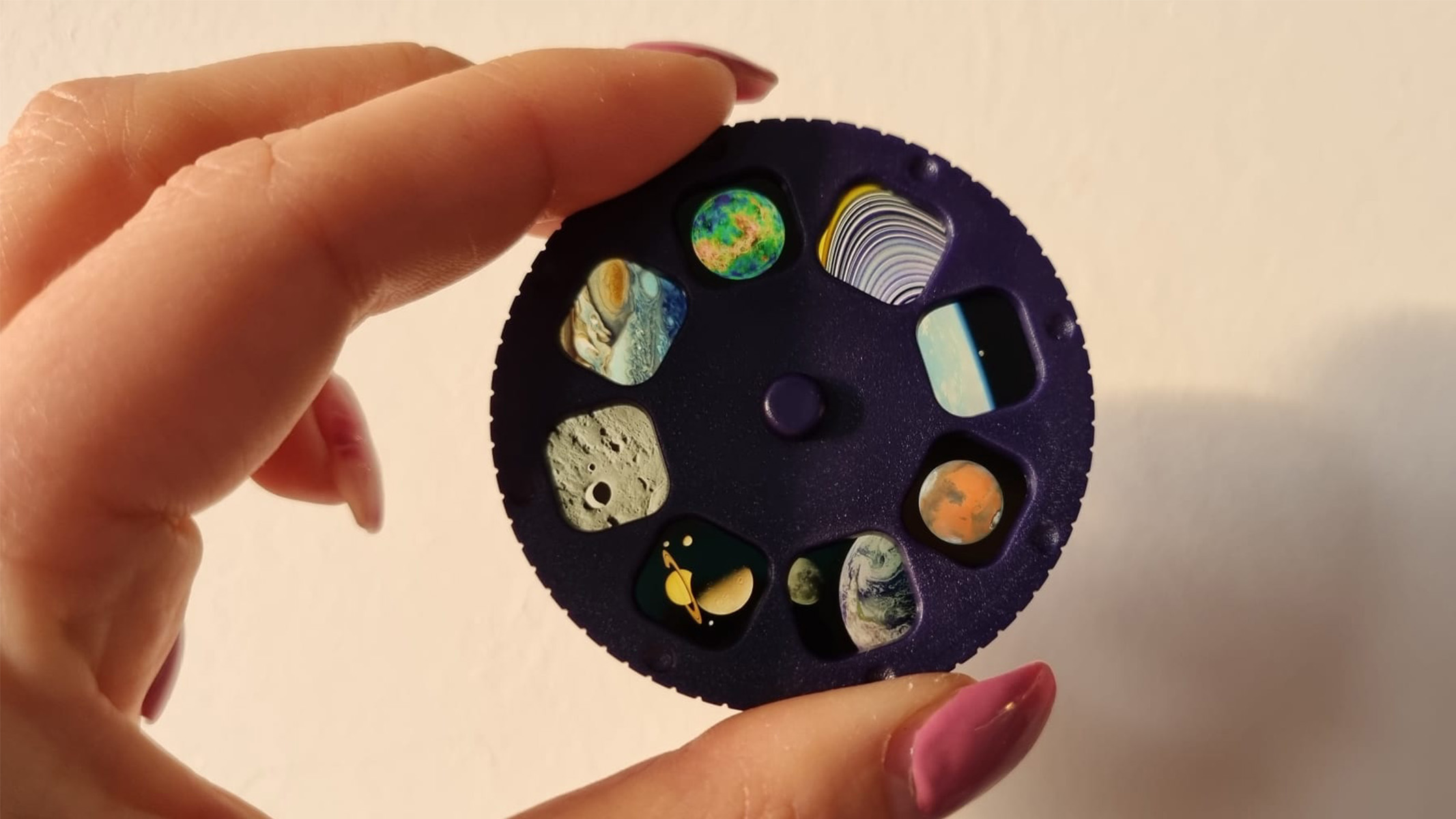
- Three-in-one functionality
- Child-friendly operation
- Sturdy and well-built
The Deep Space home planetarium has been designed with multiple functions — it displays rotating constellations and stars, projects slides with images on, and can be used as a glowing nightlight.
The eye-catching purple and yellow box instantly caught our kids' attention, who eagerly awaited the unboxing. Small grabby hands were excited to investigate the projector once 3 x AA batteries (not included) had been inserted, starting with the constellations and stars.
Initially, they did not realize there were two domes on top of each other and were initially disappointed with the projection — once they had figured out there was a top dome to remove, out shone lots of blue 'stars.'
Spinning the projector on its axis, we found the slide viewer and tactile focus wheel. As with an old-fashioned overhead projector, the projector can be focused onto near or far surfaces to increase or decrease the size of the images. Image quality is maintained with minor focus adjustments, which our children managed to do intuitively and with ease.
We enjoyed looking at the images on the supplied discs (three included with eight images on each). Admittedly, on first use, our kids whizzed through the photos quickly before wandering off, possibly because there was no instantly apparent information detailing what they were looking at — more on that later.
The projector is navy blue and white, cylinder-shaped on a triangular base. The rotation is good, and it pivots vertically to access the different functions. It feels sturdy and well-built, the switches are large, and the battery pack has a safety screw. We likened the projector to a little robot, and you could quite easily add some googly eye stickers to make it look more fun!
Operating the projector with a single toggle switch to move between the planetarium and the projector is easy. The switch moves firmly and gives a satisfying click into place to the left, right or off position. The discs are fairly robust and slot into the projector one-way, meaning the projections will always be the correct way around.
Brainstorm Toys Deep Space Home Planetarium and Projector: Performance
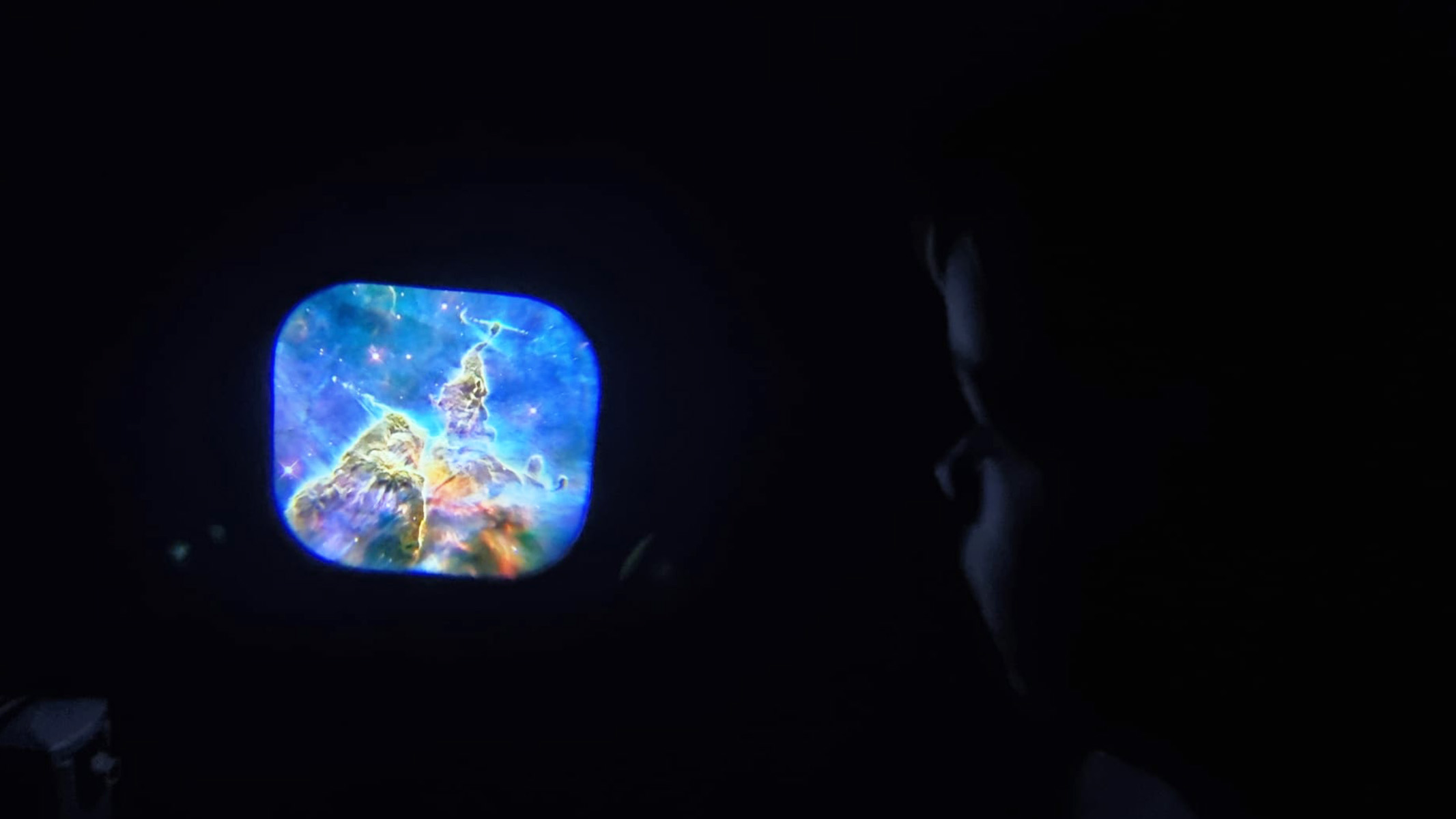
- Star and constellation projection could be more refined
- Tactile focusing wheel
- Scientific imagery needs to be explained to youngsters
The projections of stars and constellations are suitable for a small room, but it doesn't have the 'wow' factor of the lasers used in some more sophisticated models of star projector. This is suited to a young audience though, and LED's are safer for young eyes. There is an abundance of blue stars visible in a dark room, and you can overlay constellations to enhance learning. The stars and constellations closest to the projector's position are sharper, the sharpness falls off towards the edges, however, they are sufficient for the young target audience.
Focusing is easy with a large tactile circular wheel. Our children identified how to improve the projected images and were intrigued by how it worked. It did not take long to achieve sharp pictures at widths up to one meter in diameter. We did find that the projector and the planetarium work best in a very dark room to provide a good experience, so you'd need to learn together at night or use blackout curtains.
The photographic images (taken by NASA and the Hubble Telescope) are interesting to view; however, unless you already know what the images are depicting you may not know what they are. That said 'amazing online information' can be found on the Brainstorm website when you use a 'secret code'. Here is where you can find snippets of information about each projection slide photograph. Unfortunately this feels like a bit of an afterthought for Brainstorm Ltd as some of them aren't finished and end mid-sentence! Of course, it isn't meant to be comprehensive, and the idea is that parents learn together with their children, and use the slides as talking points.
Brainstorm Toys Deep Space Home Planetarium and Projector: Functionality
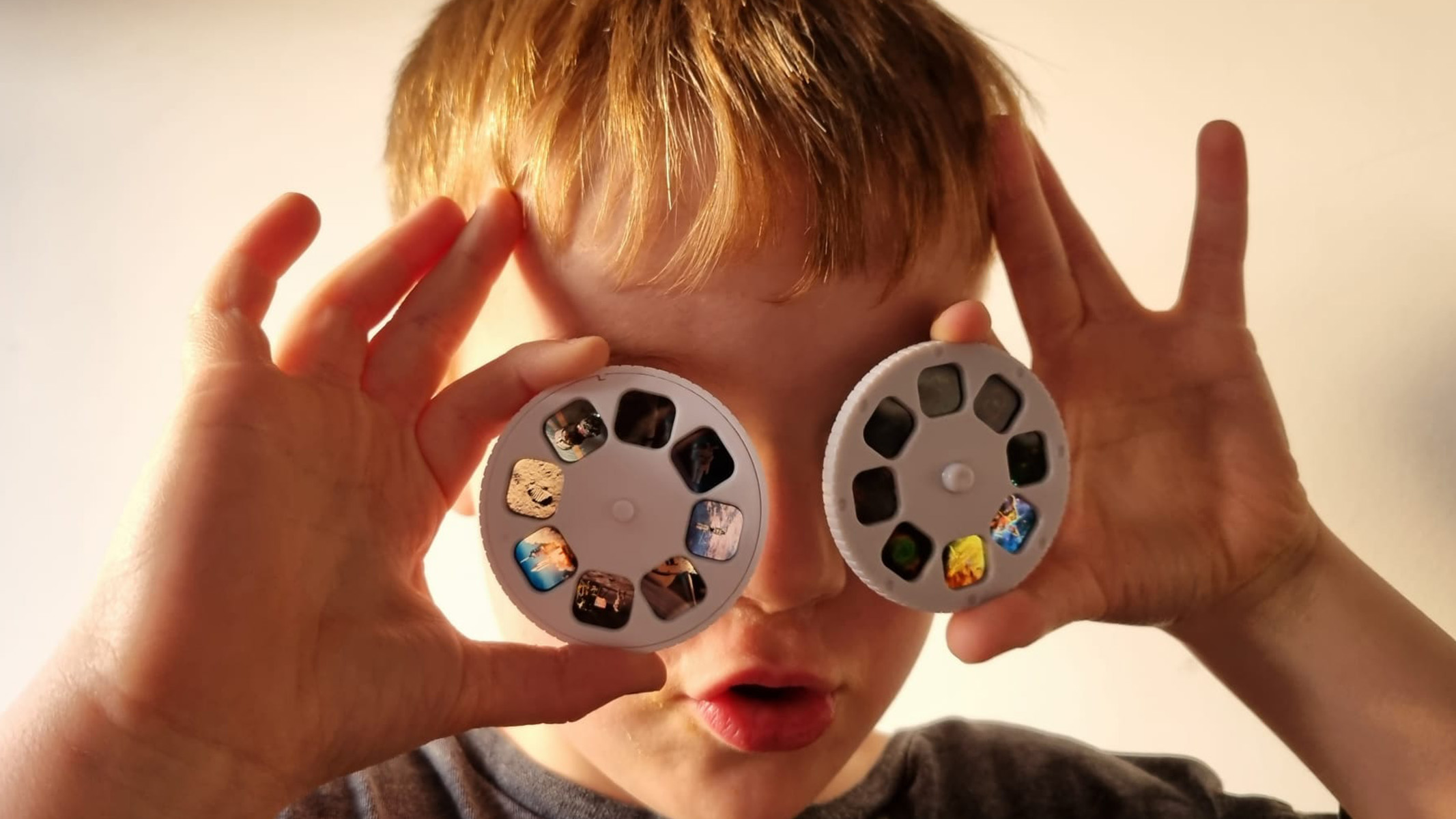
- Hands-on experience
- Battery-powered (3 x AA, not included)
- Motor is noisy
Children like to discover things by themselves — the tactile nature of this device, including the intuitive manual focus, chunky projection slide wheels and simple operation, allows them to be in charge of their own experience.
As a STEM toy, the Brainstorm Toys Deep Space projector ticks the boxes as it is easy to explain and use. Flip the cylindrical body to view rotating stars or constellations, or put on the translucent cap to transform the projector into a glowing blue nightlight. Simple operation using manually rotating disks and a focus wheel lets users explore the functions independently. Hopefully, it provokes curiosity about space and science as a broader subject.
We like the portability of a battery-powered projector; it is safe enough for a child six and above to use without supervision in whichever room takes their fancy. Brainstorm recommends eight and above, but we think (and have witnessed) a sensible younger child interacting with the planetarium, and we found that was fine too. It can be put out of reach of toddlers and controlled by their parents.
We understand the logic behind the batteries as it's portable and safe, so your little ones won't get tangled up in wires or have a reason to go near wall sockets, but we would have liked the option to plug it into the mains — nightly use (especially using the night light each night) will quickly drain the batteries.
There is a constant whir of the motor when in planetarium mode; it is not too offensive, but this may cause a distraction for some children while they are drifting off to sleep. We likened the sound to white noise and were not put off by it; we quite liked it.
Should I buy the Brainstorm Toys Deep Space Home Planetarium and Projector?
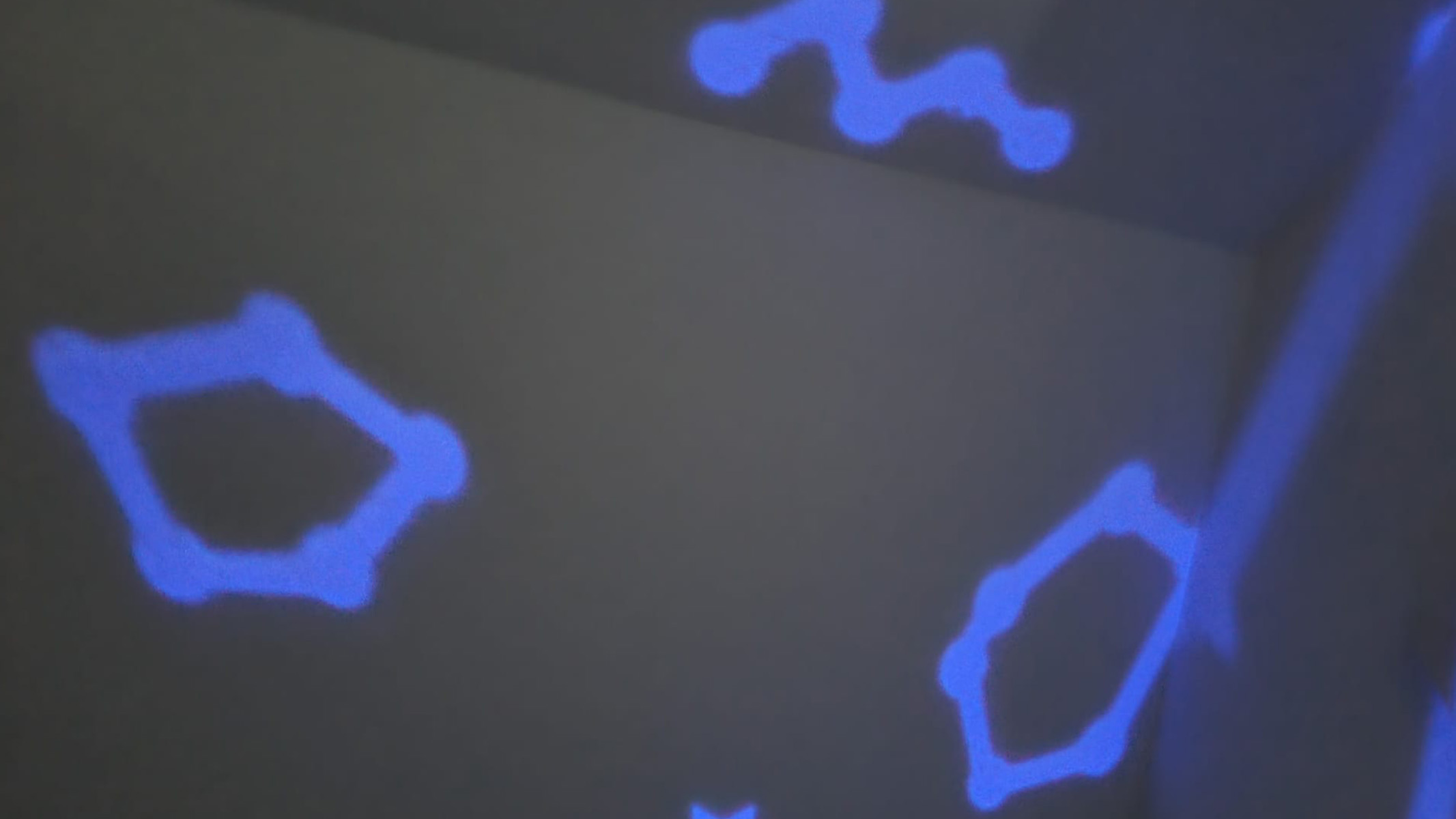
Brainstorm Ltd has created a user-friendly STEM projector that is highly interactive and fun for children. Using various NASA-created images, children can explore and learn about different aspects of space with pictures. We hear you ask, 'Could I just show them this on a phone screen?' Well, Yes! But that isn't the point. The point is that it is hands-on and engaging, encouraging discussion and exploration together or with friends.
We feel the Deep Space Home Planetarium and Projector is age-appropriate, expanding their knowledge and creating a sense of awe and wonder. The stars and constellations are soothing and enjoyable; children will enjoy falling asleep underneath them or just using them to enhance the ambiance in their bedrooms. The reasonable price makes this a great option for a first star projector meets home planetarium.
If the Brainstorm Toys Deep Space Home Planetarium and Projector isn’t for you
For teenagers and adults, the Sega Toys Homestar Flux is an excellent alternative. If you can justify the price tag. This premium projector is based on discs of highly detailed NASA imagery to fill your space (rather than just meter-squared visuals). With expansion packs available to purchase, there are further opportunities for education and enjoyment. Powered by USB and 5-watt LEDs the Sega projector images are more visible in the light that the longer days are currently giving us, supporting parents with their battle for bedtime before dark!
Created by Bresser and National Geographic, the National Geographic Astro Planetarium has an eye-catching yellow and black spherical design and is marketed at children ages six and above. This is another battery-powered projector and therefore fully portable. Constellations are white and appear much sharper than those on the Brainstorm projector. There are labels on the constellations to aid understanding so users can transfer their knowledge to the real night sky. Extra discs can be purchased to increase your collection it has an integrated radio and speaker. The Astro Planetarium has a very competitive five-year warranty.
For a less 'educational' star projector for your little ones, consider the Dinosaur Egg Star Projector that we reviewed recently. It's a novelty item that would be great to give as a gift to any space or dinosaur-loving child. It is mains powered and comes with a remote for you to set a timer to turn it off. For a novelty item, we were pleasantly surprised with the build quality and projection. The 'lid' (the cracked shell) transforms the projector into a nightlight. It comes in at around the $20 price tag, which we think is more than reasonable to create an immersive experience.







